Performance Archive Index
It entails performance work from 1980 to 2024.
For more information on any of the productions documented here, please contact me directly.
- Permission is required if you want to use any of the photos or other material in this archive - please contact me.
- I apologize for not being in possession of the names of all the photographers/videographers. Please contact me if you require credit.
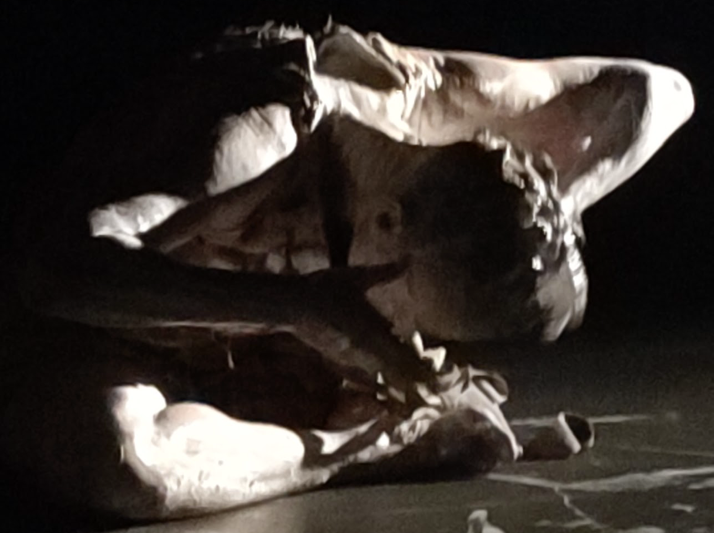
For the comfort and interest of the reader I will offer the archiving of this performance in a practice of writing a Q&A with and by myself. This way you can scroll to the question you are drawn to and read my response to that question. The Q&A praxis deals with questions, comments and critique by witnesses of my work. And, since I too have enquiries concerning this praxis that I am not likely to be asked, I have created the Q&A, to and for myself.
Enquiries surrounding and up-earthing my praxis, the discussion thereof and support of scholars who follow this work call for slow reading.
For this iteration, images and videos on this page are from the performance of ROU2 (“raw” and “grief” in Afrikaans, multiplied by itself) in collaboration with cellist, Francois le Roux, by photographer and videographer Kali van der Merwe.

During November-December 2023 the 6th iteration of Music-Dance 2023 took place at Theatre Arts in Observatory, Cape Town. This year the event was again guided by Thalia Laric and Manuela Tessi, two stalwarts of real-time composition amongst dancers and musicians. The event spanned a few weeks of gatherings, workshops, rehearsals and performances.
Music-Dance is always blended with newcomers, and ever-fresh new vocabularies of improvisation, the making of dances and music with all the vicarious talents of listening and more techniques of this high art form of relationality.

The fifth episode of this tradition curated by Thalia Laric and Manuela Tessi took place over November-December 2022 in Cape Town. Yet again, the confluence of dancers and musicians creating works in real-time - or in previous terms, improvised - brought about a celebrated abundance of creativity with expanded possibilities and growth.
The technical input was offered as Contact Improvisation (Thalia) and Movement Improvisation Research (Manuela) over two months in various studios and settings in Cape Town. Apart from those who ultimately participated in performance these sessions and workshops offered ample learning opportunities for newcomers and visitors into the realm of this artistic community.

It is seldom that I write about a project sensing that I am not 'progressing' to a final product, and really might stay somewhere in the belly of it for ever. However, having been artist-in-residence at Environmental Learning and Research Centre, Department of Education, Rhodes University has been an opportunity to explore eco-artistic work in my field. For this I wish to thank Dr Dylan McGarry for his support and inspiration to submit a project embedded in the field of performance art as ecological research. This submission forms part of my Archive.
Hopefully this archive would support work of this kind in schools, institutions in the fields of the Arts and Environmental Studies. I surmise that the sense of the 'unfinished' relates to the subject matter: exposure to ecology with certain depths of embodiment may have its effects on the artists, leaving them, rightfully so, in the vast 'unfinished' of the edge of humanity as art.

Dans Mandela, Dans! was a dance performance to the recorded speeches, interviews and conversations with Nelson Mandela. It was created to reaffirm the value of a specific past, belonging to all who participated in escaping a political and racial 'bloodbath' — South African White / Black, and Black / Black. The period 1970's-1994 was still deeply embedded in my Body. It was more than memory. It was an embodiment of a threat of carnage and equally so, of what we were capable of when we transcended our differences to transmit our immense humanity as South Africans.
Along with my partner, Sandi Sijake, who shared 15 years of imprisonment with Mandela and whose life story I place alongside my own as our cultural history, I celebrate those who take large or minute personal or political actions to do the work of the world.
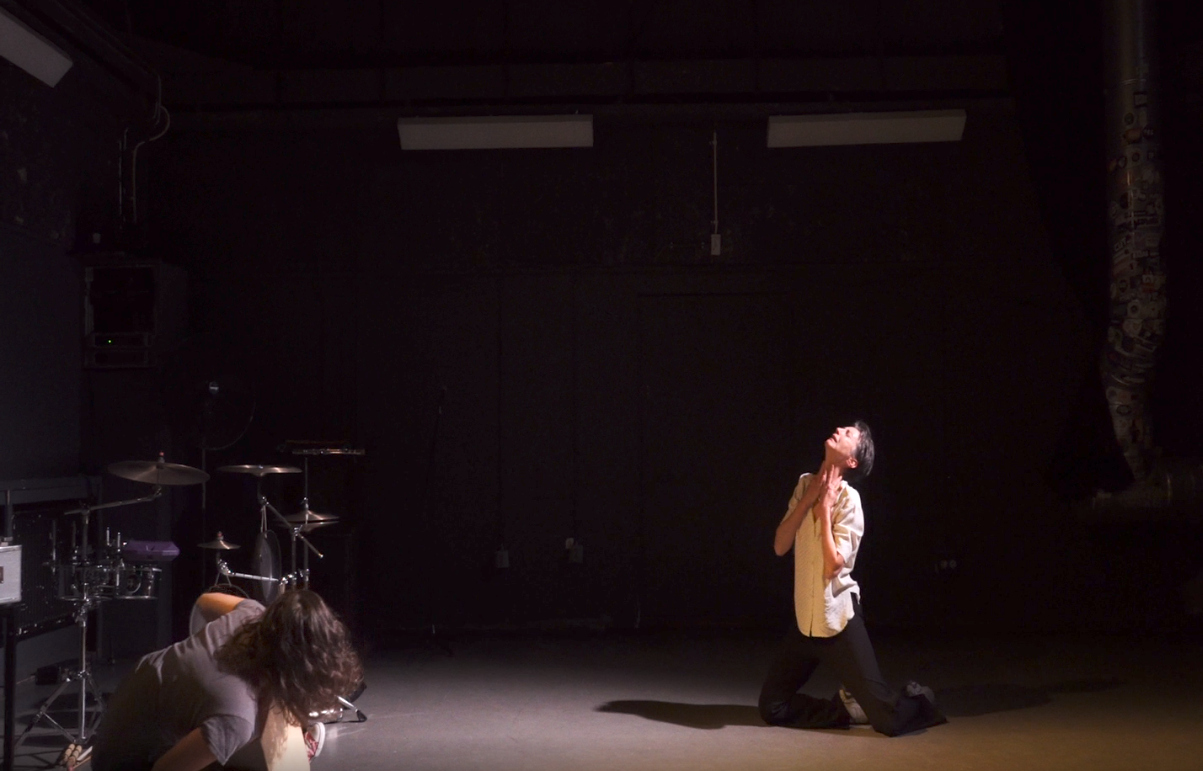
In August 2019 I attended ongoing training in the art of real time composition at the studio of Katie Duck in Amsterdam. During this period the greater sophistications of the artistic intuition had been studied. The process facilitates an enhancement of the moment of creation in movement, text or music, in collaboration with other international artists and performers.
During the period of 15 days at 10 hour days of being on the floor a constant theme that foregrounded my performance work was the sculpting of the internalised South African condition. In my final performance I was accompanied by an Italian percussion artist Maria Luisa Pizzighella. The text was cryptic, wrenching and declarative.
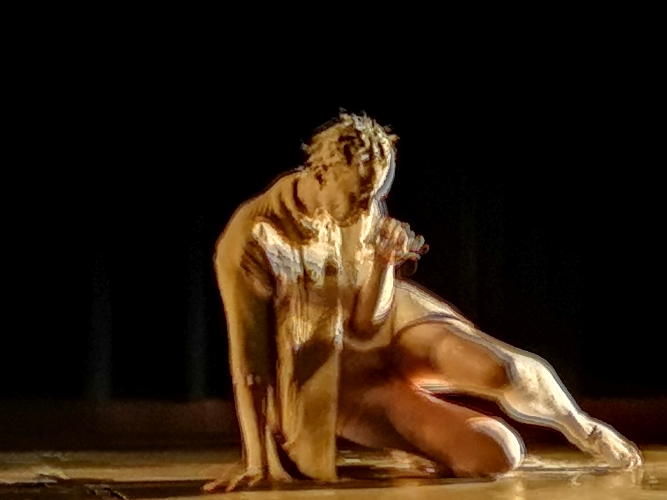
The convener of Body Politic, a series of post-dramatic performance art works, Louise Westerhout, put out another invitation to participate in the fourth performance, named animal : BP4animal
My immediate interest was to explore becoming-animal with the idea to incorporate my learning of the philosophers Deleuze and Guattari, who coined this term in their book called A Thousand Plateaus : Capitalism and Schizophrenia
The Dog in the Road - the aura.
As common in the creative process of my performances, I trust and have faith in the first manifestations of movement as I begin the process of exploration. This subjectivity is born out of and sustained by my particular process of witnessing myself as I 'throw' myself into the work.
Keynote Speech
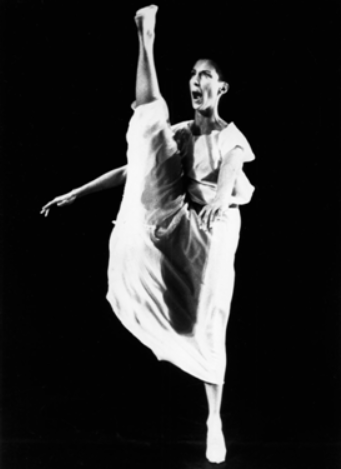
What a great honour to speak to you today - and on the 10th birthday of Drama For Life! With a feast of a program! What a Drama For Life! Thank you so much for the invitation. And it is great to share the stage with you Zimitri, Sibongile and Shelley.
I have a recurring dream that I dreamed again on the 15th of this month. I dream I dance for a small group of people under very informal circumstances. This time a few of my close friends stood in a loose circle around the dance area, almost like sentinels.
Now in this dream-dance I float in the air most of the time, coming down to the floor at my own aesthetic desire. I stay in the air in any position and don't find the witnesses at all surprised by this heavenly feature in my dance...
On 5 September 2018, we revisited Extreme Subjectivities. With no expectation of the following (versus 'new') embodiment of this work, we entered the stage. If a next layer of significance would emerge - another aesthetic, different vocabularies - we would be the recipients of it.
Relationships work in a way that evolves into crucially pristine connections. We orbit ourselves away from habits. This is a practice in the moment so that we veer off from what we know already. This 'spins' us into the orbit of relating with a concomitant emotional vocabulary that fulfills the desire for expression but not outside the ethic of staying connected on a most intimate emotional scale. Even if the attention of one of us would be elsewhere, the bodies were never outside the radar of one or two of the others.

Extreme Subjectivities, A Double Bill formed part of a 6-week long training by ANY BODY DANCE LAB supported by the Goethe-Institut, Johannesburg.
My fellow performers were Kristina Johnston and Thalia Laric for the first dance, and musician Andrea Dicò for the second.
Since the beginning of my dance career the investigation of the subjectivity of dance has been a vital part of my performances. How does one dance objectively? was my question when the press could not find a niche for "the dancer who won't" (the title for a review in the Mail & Guardian in 1986). "The dancer who won't", would not dance the way they did in the classics. The works were seen to be 'too personal', 'not really dance as we know it', or even 'indulgent'.
This facet, this genre of training - the dancer as herself - has many voices running in the background, which even in elaborate interviews were never interrogated. This could be seen as a sign of the particularities of social matter that was not discussed within an era of particular political subjects, where subjectivity was akin to subversion. More about that later.

Gratitude is an art form in itself. From the 198's I performed in homes where I needed to bring gratitude. I suffer when I do not succeed in delivering gratitude, to arrive where it belongs. A disciplined freedom helps me to find ever better embodiments of gratitude. This has been my praxis on a regular basis.
On 9th March 2018 I gifted my singing teacher and philosopher-mentor for her ardent endeavours to draw on the creation of my voice. This, with the complex proprioceptive attention to my body. This is the best singing instruction a philosopher-dancer of my age could ask for. The two of us practice a martial art of anatomy and philosophy which asks for a meditative focus to release one muscle in the neck, next to another, one which should be sustained for sheer strength of will-force.
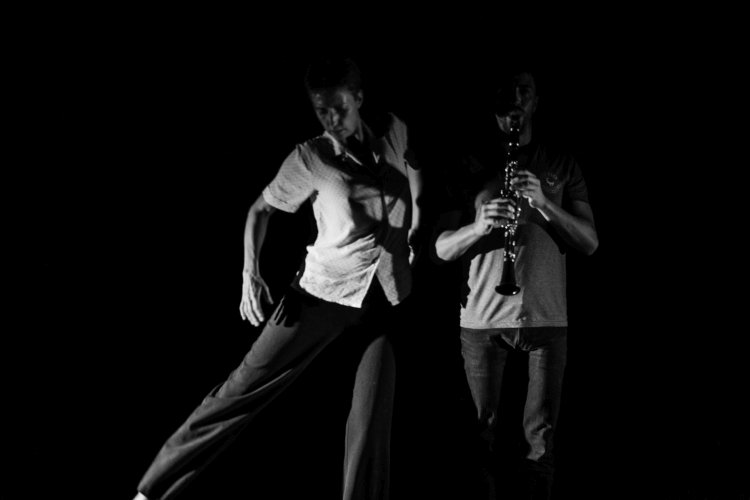
Photo: Lindsey Appolis
With the visit of Manuella Tessi, mover from Amsterdam, a five-week music-dance project was launched. Around 15 local musicians and dancers worked together to excavate the hidden contents in collaborations based on methods of artistic improvisation.
This work has been part of what I would call "my auxiliary training", augmenting the tome of techniques, approaches, philosophies of body, body intelligence, post-dramatic theatre, cathartic excavations of the political psyche as deposited in body-movement and also voice. Amongst my most recent teachers in these fields were performers from Pan-Theatre in France and Ruth Zapora in the USA. Locally this work is practiced with a supreme sense of physical honesty by Thalia Laric and Kristina Johnstone.
There is a belief that only gross, empirical and dominating realities matter. But Powers of Lightness performs a body-mind experience. It places emphasis on subtlety, inner sensation, empathic listening and observation. We all practice this daily. It frequently replaces judgement, comparison and exclusion.
In Powers of Lightness awareness of sensations in my body are not only a mental awareness. The sensations generate feelings and movement. Awareness of sensation gives the impulse for the dance. If there is no experience of sensation, no movement would arise. (This depends on my awareness.) Being mindful of subtle sensations brings freedom to feelings, often feelings without names. But they arise, as if longing for a surface. As if they want to live and be acknowledged. Perhaps they want movement to tame them, to mature them as enlivened consciousness.
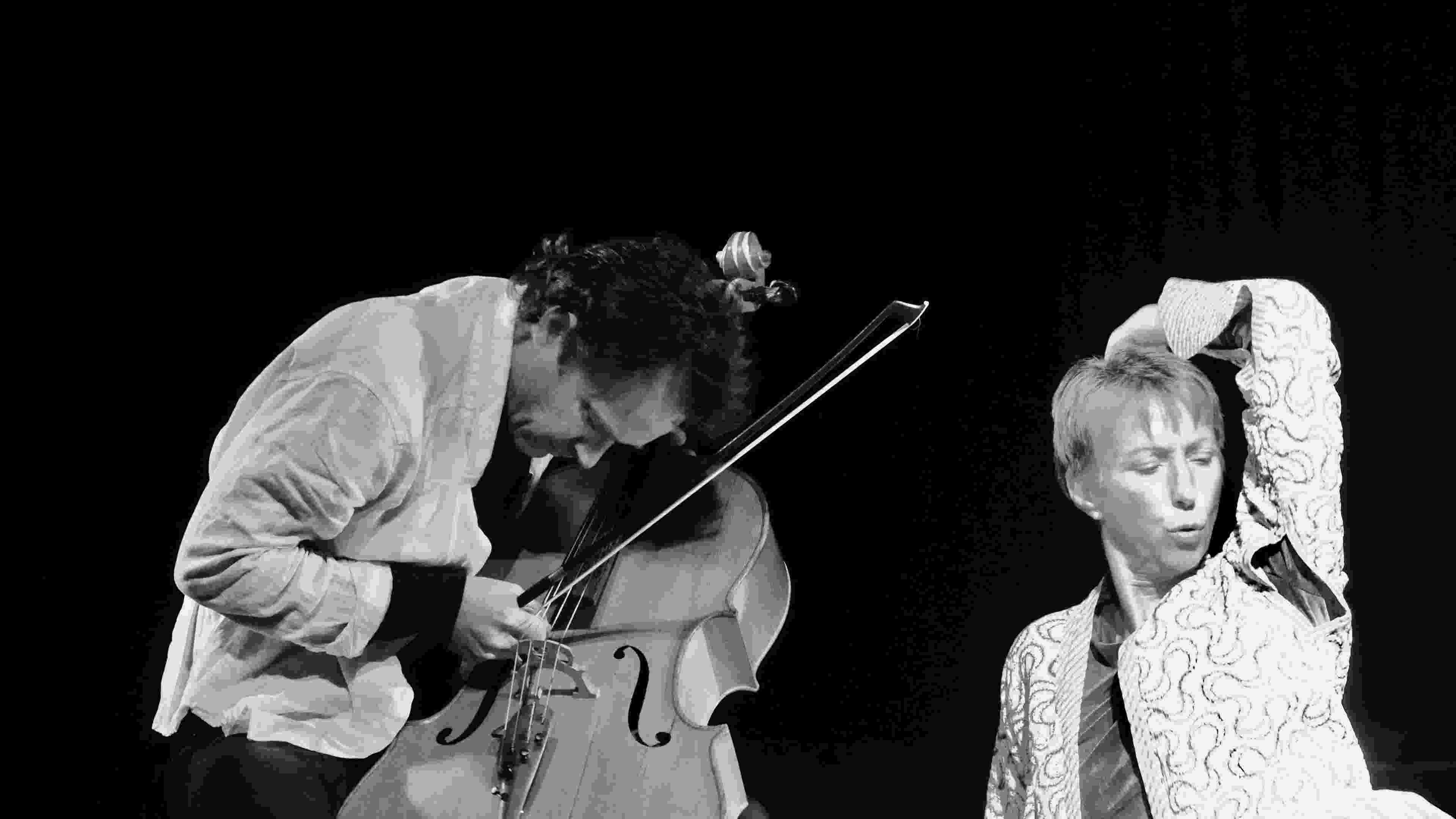
In 2001, cellist Francois le Roux and I entered stage zero of performance. We met shortly before and decided to perform together and called the work OPUS. (See this on the Archive below.)
Similarly, in August 2017 we made contact again and called upon each other to rejoin the ecstasy of the unknown in performance. We met on stage at TAAC, did one performance called the work ROU, and might wait another 16 years before we enter center stage together.
ROU is the Afrikaans word for many states of being, even noun-ing and verb-ing as expressions of a state of emergency. Raw, naked, unprepared, uncooked, fresh, mourning, lamenting, solitary, solo, crude, rude, gross, rough and sore.
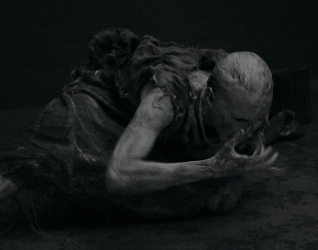
The English or Afrikaans for Lwandle is Strand.
It is a place, a South African township barely a kilometer from the ocean, False Bay, Cape Town.
South Africa felt like it was slamming down and building a city a day. Politics was becoming very complex, tight, illuminating, perplexing, dangerous, healing. Students protested fees, libraries were burnt down...
During the early 1980's the term Chthonia was used by South African dance writer, Adrienne Sichel, to describe the energy of a particular performance of mine. At that time I looked at the term, and not finding the meaning in the dictionary, I ignored the word outright.
Since then, the Tossie van Tonder aka Nobonke Dance Archive has been constructed from videos, images, posters, programs, notes and reviews over the years and is over a terabyte long, spanning from 1959 to this day.
Following the ecological theme of the performance What does the earth think it is, before sunrise? in 2013, I virtually recreated the performance with the wish to embody the awakening of my mind into the vastness of everything non-human, to its micro sentiments of bacteria, virus-invisible, immeasurable, yet the primary mirror into our survival, the atmosphere around and within.
My gratitude to The Original Swimming Party and Guy De Lancey for their dedication to this work, which gave me entry into states I would have found with even greater difficulty, without them.
The work was performed at TAAC in Cape Town and on the Main Festival of the National Arts Festival in Grahamstown in 2014.
During 2012 Jennifer Steyn came to some of my workshops and enquired into a mentoring relationship. We agreed to work together on a process that would conclude with a performance.
We began to meet at the Theatre Arts Admin Collection in Observatory in Cape Town. She brought her wish to work with South Africa as theme. Our discussions centred around the current issues of SA life, poverty, politics and her daily encounter with her conscience as much as her frustrations at trying to address these as a performer, mother and daughter of an ailing mother.
We began to work on the floor with her feelings, how they were lodged in her body and discovered soon that her preparation for her ability to embody the deeper feelings of what had sprung from being on the performance floor as a South African - embodying all the feelings she could directly connect with concepts regarding South Africa - was to take a number of routes.
This work forms part of a decades-long exploration of the ecological citizen of the post-modern era. It is a movement toward an ecological awareness illustrating how we have withdrawn from our non-human nature, both in our speaking and in our senses, of which body movement is one amongst the senses of balance, of life, of thought, warmth and the sense of the self. This disconnection leaves us insecure, restless, sad, insensitive, dependent and with poor judgment. It also leads us to hubristic self-positioning, with the power to annihilate life itself.
Technically and artistically this work requires an alignment that overrides binaries that disconnect us, such as mind/body, inner/outer, rational/emotional, free/dominated, culture/nature, space/place, human/animal, new/old, male/female, urban/rural, middle-class/working-class, white/black and subject/object.

Wish You Were There
I came to know Dinah while mentoring a performance called Okuya phantsi kwempumlo with Mamela Nyamza and Kirsty Ndawo in Cape Town during 2012-13.
Dinah Eppel is a person with a deeply conscious history of being South African. Her theatrical career includes being one of the founding members of the Market Theatre in Johannesburg. When she was in her twenties she took lessons in isiXhosa at UCT. This was the beginning of an immensely rich journey out of which she wanted to bring the best, into performance.
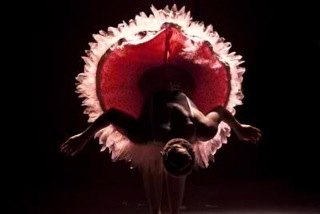
Okuya Phantsi Kwempumlo
This is Mamela Nyamza’s version of how our meeting occurred for her.
With Dinah Eppel and Kirsty Ndawo I had a magnificent journey of crossing boundaries. That of South African traditions, dance forms, stories, bodies and ages.
It was a most magnificent collaboration that lasted for years.
Land work is situated between Heaven (the first thought) and the Beyond. Here, we have to labour and love, confront our shortcomings, go back to square one with an elemental fairness and sanity. After that we learn the art of unconditional expression, that we are One with everything else – total immersion, the unknown, the unexpected and unintended, the Void.
The End was commissioned by GIPCA to be performed at the Hot Water Festival, inviting artistic commentary on climate change.
At the time I was on a 3 year long exploration of living on land, my response to what was becoming clear that we needed to adjust our ways in order to meet radical changes in oil production and climate change.

I met Caroline Calburn 10 years ago. She was a sensitive director for a rite of passage performance for my 11 year old son and myself. The performance was a fine work of art, delicately balanced with a strong consideration of age, separation, ritual and theatre.
It was the same quality – care as well as meticulous sensibility for the person involved and the work that needed to be done – that I found at TAAC where Caroline mastered another art: that of managing a ‘home’ for theatre performers.

I met Robert Hamblin when I was looking for an extraordinary visual representation of my work at the time. No particular performance was involved.
We met at TAAC and used a white paper sheet that Robert had used for many of his stills at the time and thereafter. The background was infinite as one was to move on the paper, lying down. He was shooting from the top of a ladder. Figures appeared to be ‘floating’ and delicately ‘light.’
He used similar photographs with himself and his transgender subjects and some of these he had asked me to take, also from a distance above.

My involvement was with a work called LIMBO. A French choreographer was given about 10 performers, all black, to create a work on Church Square. I was called in for a reason I was not clear and had to make sense of as rehearsals progressed. I ended up been told by the choreographer that what I should concentrate on is to do whatever I wanted while the rest of the performers were given the task of dismantling colonialism. This took place amongst other acts as tying ropes around the statue of Jan Hendrik Hofmeyr, a stalwart of Die Afrikaanse Taalbeweging of the previous century.
I ended up designing my own costume made as a Somalian female in a burka with my revealing skin painted in blue. Nobody commented on this. I just continued concentrating on what I sensed was required. For the record the images are by photographers Nicky Newman and Saun Wilson.
This is a video done at home between Nicola Visser and myself. The exploration was that of instruction.
I am a very solitary performer when it comes to working on my performances. The need to concentrate on what it is that wants to come into the work is one that is intolerant of interruptions.
This fact is also I that would equally (desirously) invite another artist to join me on the floor. One such a dance animateur is Nicola Visser. Nicola, a dancer and choreographer who has spent much of her time with dance with the disabled is a master at facilitating movement, solving movement problems, and holding the frame for authentic movement to emerge. We have had an artistic relationship for many years.

Joelle Chesselet is a filmmaker and photographer whom I initially employed as the editor for this archive. It was a monumental task which took her many months for which I am immensely grateful.
She was also an apt photographer for my style and aesthetic. This series of images she took in my garden. The costume was constructed from a painting by my friend Wilhelm Hahn. It became the skirt with the dancer/s painter on it, upside down.

An extraordinary collaboration of dance, voice and revelation.
In this production I worked with a remarkable poet and singer Jacques Coetzee. Our major resource as a team was the pooling of movement, voice/sound, the story of our time inside the sacred vessel of ability and so-called disability. Jacques has been blind for most of his life. He is a person for whom this factor has become a deepened source of creativity and in INTIEM ETC a source that also deepened his ability to sense what needs to be done, feel how much, where, when and explore the nature of the world on the edge of crisis, as performance.
It was during the years 2004 onwards that I had a distinct feeling that my body was aging. It made specific demands on how I began to think about myself. Whereas I experienced my body as ‘whole’ on my mind before, moving in one piece, everything coordinated, nothing left out of the frame, so to speak, I became more aware of different parts of my being. One hardly knows that one consists of body until it falls apart.
James Hillman the Jungian, in his book The Force of Character in the Lasting Years compares this stage as that of a sock. You are made of the same sock, but it is becoming frayed and holey. You need to look at the holes and concentrate on darning every hole as it comes into your vision. Ultimately you are still the same sock…
Even though the material is different, you will retain the same form. Form individualizes. Form has an active force. The new wool must become me. The afternoon knows what the morning never expected.

Bluebeard was a production I co-directed with Jaqueline Dommisse with the Remix Dance Theatre for abled and disabled bodied dancers.
The story of Bluebeard was chosen to comment on the spate of violence against women in South Africa.
Jaqueline and myself were committed to explore this theme with the company to the bone, so to speak. We engaged in a 6 month long workshop during which time we explored various themes within the story. It was an intense and fulfilling experience that culminated in a performance at the Lion Zoo just on the outskirts of UCT’s grounds.
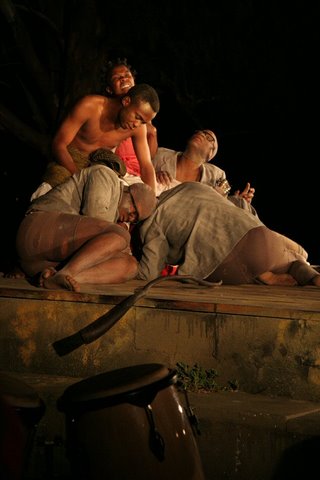
At the invitation to work with Third World Bunfight under direction of Brett Bailey I conducted the movement direction. Brett works with his actors in ways that shift their own opinions about themselves. I saw this happening as part of the rehearsals.
Orfius took place in the veld at the Spier Estate. The stage was erected next to a farm dam, one of many. The other dams were empty and were used as the underworld of the play. The audience moved through territories, vastly different from another during the night, each with a torch.

Performances do not always require a theatre stage. Most dramas take place in the home. For them to be appreciated as performances they would only need a good aesthetic slant and a witness.
Often I would roll up the carpet and do a performance for whoever was at home.
For Exorcism I was lucky to have my friend Wilhelm Hahn as the witness, but also one who could take photographs of the event.
(Afrikaans for Puppets)
…is
when the puppet loosens her selves from strings and relies on the
sentient breaths of witnesses to bring about the most exaggerated
expression in a state of emergency
In
2006 I was invited to participate in the OUT THE BOX FESTIVAL FOR
PUPPETRY. I found myself out on a limb. I was not a puppeteer and yet
the directors thought that my work would be welcome.
What
was a live performer doing at a puppet festival? The idea of strings
or manipulation of puppets became the challenge for a live display of
the principles supposedly present in the world of puppetry.
To become a parent, life puts a task before you in no uncertain terms. It might be a child or a group of people who are directly in your care. You must look out for them. They are in your soul-care. But when someone is really close to you, you are in each other’s soul-care. A child may even take up this task for a parent.
In mamakaluyolo I felt that this being, my son, was playing such a vital role in the shaping and destiny of my life that it had to be explored in movement. For a while I explored this by myself, and then I decided – against a keen ethos that some material does not cross the line between mother and child – that I could invite Luyolo onto the floor with me. This was a great collaboration of eager examination into what our relationship was all about as connected within the boundaries of movement and voice.
Amongst the many collaborations I did with artists from different walks of life, the work with writer and poet Ruben Mowszowski was as rare as it was always with a sense that we were doing this work all the time. The work had a sense of accomplishment to it, expertise and precision. It had to do with our ability – as writer/reader and as performer, pianoic and as dance – to listen to the other.
I had a keen sense of the significance of certain of Ruben’s sentences, from his own writing, to him at the moment, as if he would rediscover what he had written by performing it in this way. For those moments, I made space.
It has never happened that I had to consider calling any dance by a part of my body. But it is truly impossible to replace the incidence of bladder cancer with anything else that does not acknowledge bladder as bladder and cancer as that which I immediately had to document, film, record in as many ways as yet another episode where my interest in myself, this time the opening to my death, fascinates with riveting new stage, the hospital theatre.
It was 2003 and the news of having a lesion shocked me. I realized that I was a single mother who claimed that I would not allow anything to come between me and my contract with the world, at that time, namely to raise my child.
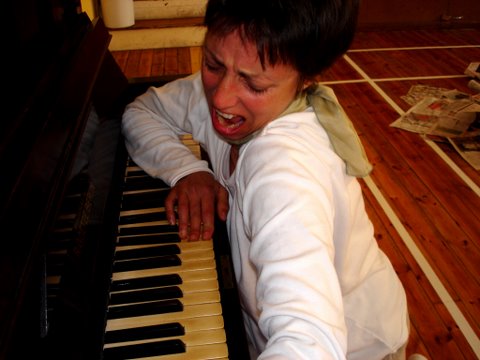
I have a piano that my father bought me at my 7th birthday. It is with me wherever I go.
The piano is like a dance. I always say that I do not play, but I dance the piano. I cannot stay on the stool and if my body must curl itself around the notes then that is what would happen.
The painoic dance is often cathartic. The measure between notes, the depression of those ‘ivories’, the surges of breath and voice is something I am very grateful for having discovered and extended into performance.
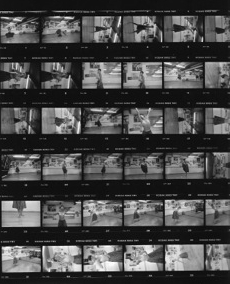
After the explorations with UNNAMEABLE 1, I could not progress to another performance without renaming it again UNNAMEABLE 2.
Bo Petersen joined me in exploring what this performance would mean. It ended with a narrative, a recorded rendition of my deepest words on Africa.
The Johannesburg performances of unnameable 2 were scripted by the Cape Town based dancer choreographer performing with Nobonke attached to her original parental ones: Magdalena Maria Johanna.
The restoration of white integrity in South Africa
The controversy of what it means to be South African is a complex and even highly contested topic. The diversity that we are as South Africans vary from the ease with which one can buy yourself into status, to the identification of being South African as being the one who feels that all that will go wrong will be blamed on Whites, something that Whites would never be able to refute, as sentence uttered by Antje Krop in 2015. Whichever way, identity has a deeply emotive charge around this question: who is a South African?
It would take a long time to explain this to a person who has the tendency to counter every stance of SA identification merely as a sparring exercise. This is not what I propose here.
Europe colonised with the Christian religion. This was a form of belief that served Europeans during the trials and tribulations of a dark Africa where the spirit was endangered by the overwhelming mystery of African spirituality. That there had been White people all along who followed a particular cosmology that influenced their beliefs, medicine, survival, and relationships was evident in the practices of many Afrikaner women mostly for whom nature and the spirit-world was united.
The coming of age of White spirituality that could be experienced as a body religion, where song and dance and artmaking drifted into the world of the shaman coincided with the democracy of SA in 1994. Suddenly one would find African spiritual practices of unique natures and training and background. This allowed many performers to enter the realms of the underworld. For me it coincided with the practice of an art form that had the potential to be a ritual event. All my solo performances are in fact milestones in my own life that had to be ‘given form’ in such a way that it, with increasing clarity, accessed a spirit emanation, as art.
My experience of the military – during the apartheid years – were an experience with mixed feelings.
While at school, and while very few of us fully understood the meaning of the army and what it had meant for our future, every girl wanted an army-outjie. I had one, a few actually. They were upright men with fit and strong bodies who took the army, frankly, as a joke. I could not really make any sense out of it. During the war years and afterwards, many men of my age returned from the northern countries bewildered and damaged with a banal outlook on life. There was no such thing as PTSD and debriefing after what was generally referred to as ‘contacts,’ was unheard of.
When Luyolo was born my attention swung 180 degrees to the significance of this event – raising a child. But it did not happen without its complexities.
Apart from needing to navigate a mixed race relationship, the presence of a child, within such a relationship and the prospect of how we would make meaning of our lives from now on, kept me thoroughly occupied.
The dance remained in the side wings for many years. Every now and then I would have a spontaneous happening at my house with the hidden motive to be able to feel what it was to perform again.
I have made some of the most lasting friendships during 1988-1993 while living in Namibia of my whole life. We went to the bush and the desert regularly and sharing the extraordinary landscape connects the experiences deeper than the existence of just the event.
One such a friend was Wiebke Volkmann. I first met her when she was willing to collect me for a meeting at the founding of the Rape Crisis unit in Namibia. We landed at a house with some women, clearly all interested in the project. But I was struck by their degree of solemnness. Later I discovered that they were strong feminists and some were lesbian at a time when the status of homosexuality was still an uncertain public persona.
Many years later when Wiebke and I reviewed our rich friendship together we revisited this initial meeting and I was glad to learn that I was not the only one experiencing the meeting as rather hostile in atmosphere.
The first Earth Day celebrations in Namibia were held on 1 April 1990. Imagine that Namibia’s independence from SA was barely 9 days old.
Like most of my work and performances in Namibia, there was mostly only one happening, one event, one day and it was over. It was as if anything took place within a larger context and the repetition of a performance would be seen as overindulgence, inappropriate and would be misunderstood. The venue was the Windhoek Art Gallery. There was an exhibition of Jackson Mbhazima Hlungwane in the gallery. He made the fantastically larger than life wooden sculptures out of the trunks of trees. One needs a hall for one sculpture to be truly appreciated.
During the 5 years that I lived in Namibia – the country I fled to when I could no longer breathe or manage the banal and hurting commentary on my dances from South African critics – I did some interesting and very different performance work.
This performance accompanied the era of independence from South Africa. It was exhilirating to live in Windhoek. It was uhuru alive and well and in the process of radical celebration. One did not, not speak about the emancipation that was felt by all. Flags were flying everywhere, various political parties had lengthy rallies, translated by up to 9 people at a time and yet there was an air of trepidation. It could also call in a total collapse of good will. (But this was less so the case as it was in SA 4 years later.)
For me it was a ‘schizophrenic’ experience. I was not Namibian, but only a visitor to the country to learn from the process of democratization and what my role would be in it. For some I was the enemy, White, South African and not yet Namibian.
Jeannette Ginslov and myself were regular dancers on the floor. We made up a team such as what I had with Gill Scott in 1984, Wendy Newstadt during the 1980’s and numerous other dancers over this decade of the 1980’s.
But 1987-8 was particular in the sense that Jeanette and my explorations were creative to the degree where one would consider your self threatening isolation. Our floor-work became beyond the human condition in its imagery, felt experience, with a specific anarchy embedded in it.
We decided not to perform in a theatre and this fulfilled a sense of the specialization that we reached choreographically and as a collective, a small one.
In 1985 I saw the film Diva (1981) directed by Jean-Jacques Beineix and managed to get the music. I was struck by the story in which the diva is unwilling to have her voice recorded until she heard it played to her by an admirer – a post office clerk involved in underground deals and car and scooter chaces and fights, and so on. I liked the whole scenario of a underworld involved in the potency of an opera singer and her purist notions of her own voice.
I put the music on and began to choreograph to strictly complement the music, not changing the order of the tracks, and without allowing the film to leave my attention. In the film the story and the music were deconstructive in nature, otherworldly and gorgeous, dark and illuminated. Her opera gown/costume was stolen from her dressing room by the clerk. The opera house teemed with peeling paint. I loved the detail. I affirmed that I did not have to rearrange music from the cassette tape. I took it as ordered from beginning to end. Nothing was to be altered from the diva’s perspective in every respect. I could relate to her sense of privacy and the mystery of being discovered even though she had an unquestioned public persona. Her semi-reclusive nature in the film appealed to me. But there had to be precision to extract the essence of this story as it pertains to a mystery about myself.
There is always a favourite. The temptation to list and therefore to have an item on the top of the list is deeply ingrained in our human nature. Timeless Tango is my favourite dance on this archive. With a statement like that, one does not get away for long. So, here.
I could relate to Laurens van der Post at a time when the Jungians began to frequent SA and friends overnight began calling themselves Jungians.
Van der Post’s character reminded me of my maternal grandfather Willem Hendriks, tall, silent, troubled, dedicated, driven like Harry Dean Stanton in the film Paris, Texas. Van der Post wrote about the things I wanted to know at the time. He spoke of the interior and exterior of men, of Africa, his Bushmen friends, and of the unbroken line between the earth and us.
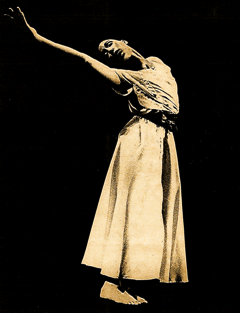
Any form of collaboration with another artist is an enriching experience. It was particularly joyful, working with Bob Hill, retired double bass player of the SABC orchestra. We did performances for functions, fundraisings and performances by invitation such as the one at UNISA.
We explored many variations of dance and string, added rhythm and voice and often conversations, or even gibberish. It was always an entertaining event, and of course very different from work that I had done by myself till then - and thereafter, ever so often looking for a platform for catharsis.
The music and dance that Bob and I created had nothing to do with politics or emotional exploration of the body in movement. Freedom was a spin off, unadulterated spontaneity and lots of laughs.
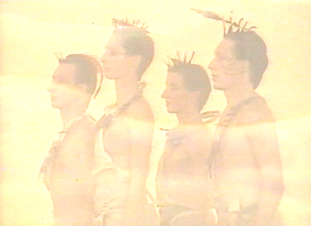
The producer Danie Odendaal commissioned these two works for SABC. The music of Hans Roosenschoon was suggested and I chose three more dancers to perform with me, Tony Bentel, Gill Scott and Guy de Lancey.
Makietie is Afrikaans for an exuberant gathering. No doubt, I needed it to have tension and created this through one dancer representing juxtaposition to the jollifications.
Helios, the heat of the sound and the mirage-like quality it evoked nudged me in the direction of the desert, Bushmen, and stark images of nomadism, moving landscapes, motionless figures, the collective in animals and human shapes.
I read a book called Die Kremetartekspedisie by Wilna Stockenström. It was a story about a slave woman at the beginning of imperialism’s spread over the world and her life as lived in and around the baobab tree at the end of her own subjection to slavery in Africa.
The title Intarsia refers to the delicate carvings into the headrest of the slave owner, an object he ostensibly promised the slave woman, should she be good.
I typed out the extracts from the book that informed the different dances, all in all a program of substantial volume expecting people to read and buy that remarkable book.
In 1984 I took a trip with fellow dancer Gill Scott and artist Johan van Zyl along the West Coast in Johan's new VW Golf. These cars had just arrived on the market and we landed up on hilltops and riverbeds with this car, and discovered people from Namakwaland, 'lost to civilization', literally an eye-opener. Of course the reason was that no-one drove where we did. Lekkersing was a community of people who still wore clothes from the previous century and we met a man who lived with his kettle in a riverbed.
It was here where Gill and I were inspired to do the mountain dances, Thabangita. It was a series of four dances, some solos and some duets. We approached ADIDAS to sponsor our performances in Grahamstown and at the theatre of the Johannesburg College of Education. They were willing to give us gear, too much to creatively cope with, but no money. Money was not allowed in the arts, we were told. It was not a sport. End of story. So we created a work incessantly taking gear off and putting others on to traditional, indigenous music from the Transkei. That was the last dance on the program.
Possession Arts was a movement by a number of artists and performers for whom the division between these modalities did not exist. So Performance Art was born from a group of Johannesburg creatives such as John Nankin, Ivor Powell, Sybille Nagel and many more. It was not a form that I knew or understood well. But my friend Wilhelm Hahn who was a painter and architect began to invite me to all kinds of events, either as observer or as performer. We used the irregular kind of venue for our events. One such a performance was with a group of performers who occupied a block of flats opposite the Market Theatre. The court yard on the inside of the building had possibilities to hang things from and one could also end up on the roof-deck if you explored the territory, as I did, and landed up on the roof under the stars while the performance was still continuing underneath me. I also remember making use of a swing with immensely long ropes on which I swung across the whole space occupied by performers, quite safely. I really liked this idea, of not knowing whose is ‘on stage’ with you and doing what seems the right thing to do in the moment.

During 1983 I came across a photographic exposition of David Goldblatt, in his book called In Boksburg. It spoke directly to me. It depicted the milieu, affinities, circumstances and pathos of a South African middle class White community in the suburbs of the Witwatersrand, in this case Boksburg, a mining community on the East Rand, an hour east of Johannesburg. It could as well have been photographs of Afrikaners (which is how I interpreted it when I saw the book the first time) from the mining town of Carletonville, where I grew up, one hour west of Johannesburg.

In 1983 I followed KABEDAZ (1982) up with KABEDAZ 2 in Johannesburg. Those were the times when the same feature movie came around again, such as Rocky, followed by Rocky2, and it solved the problem of having to give a title to a performance with many dances in them, each with a different message.
Of course the origin of the work KABEDAZ was still ‘Come and Dance’, following the Afrikaans song Kom en dans, Klaradyn! I could see how I could continue to call every performance of mine by that name as it posed a possibility that spectators would be attracted by me as the dancer rather than by a ‘fictional’ title. But, alas, this was the last of the series.
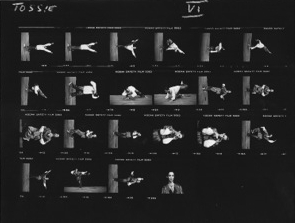
This KABEDAZ, ‘come and dance’, was then the first one-woman show, of which many people assured me it was the first ever in South Africa, which I could not believe, and was suspicious of in a country such as South Africa where cultures, such much as performers, in rare sceneries, passed each other like ships in the night. It was only at the birth of Kabedaz 2 that I decided that it was to be called Kadedaz 1. The name? Try to say “kom en dans” closing you nose. It all makes sense when you wish to remain a mystery….
MUSIC: GEORG TELEMANN, MEREDITH MONK, VOICE OF CAREL TRICHARDT
